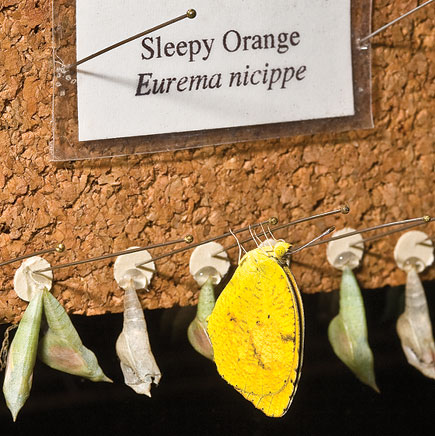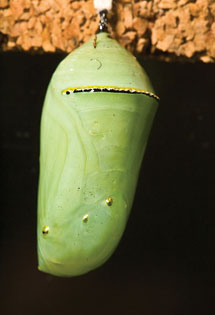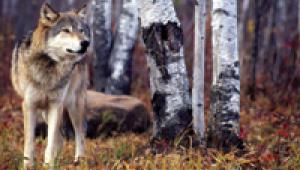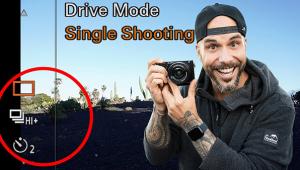Really informative article about the big city butterflies, there seems to be a large collection of butterflies and moth of different variety. Their protection in these greenhouses is a great idea for the conservation of their beautiful species. OmniTech Support
Locations; Big City Butterflies; Photographing At The American Museum Of Natural History’s Conservatory Page 2
Hide-And-Seek |
||
 |
||
|
||
Chrysalis |
||
 |
||
 |
 |
|
|
||
A special thanks to the courteous staff of The Butterfly Conservatory and to the American Museum of Natural History for providing this rewarding opportunity.
CAUTION: Be Wary Of Condensation
Chances are you've acclimated to the museum before stepping into the greenhouse.
Still, there is a marked contrast between temperature and humidity levels outside
the conservatory and within its walls. To safeguard optics against condensation
(which forms when optical surfaces that are cool and dry are exposed to warm,
humid conditions), keep the camera inside your camera bag until you're
ready to use it. If you step through the doors wearing the camera, tuck it inside
your coat or jacket so the warm pocket of air acts as a buffer, and leave it
there for a few minutes. As a further precaution, give yourself a moment before
opening the second set of doors into the exhibit, and allow another few minutes
before exposing the camera to the new environment.
Humor |
|
 |
|
|
Macro Techniques With Butterflies
(1) Speed is of the essence. Set the lens to full-time manual
focus. Don't wait for autofocusing to kick in, because it might be too
late with these often flighty subjects.
(2) Preset the focusing distance (magnification) and move in
physically with the camera to achieve optimum focus (some back-and-forth movement
may be necessary to get a visual focus lock). If time permits, play around with
focusing/magnification for more interesting, more encompassing compositions.
(3) Depth of field for close-ups is minimal at best, decreasing
exponentially with increasing magnification. Use a small lens aperture (preferably
f/16 or f/22 at ISO 400; if the flash is not powerful enough, you might have
to use a larger aperture, such as f/11 at the same ISO, or go to ISO 800 or
higher to maintain the smaller f/stops). Small lens apertures also help limit
the throw of light and darken backgrounds for more dramatic effects.
(4) For best results and a steadier hand, use the optical viewfinder,
which gives you the clearest, crispest image necessary to get a full sense of
sharpness.
(5) Shoot several exposures of the same subject for insurance
against focusing and composition errors that might result from even the slightest
movement.
(6) With close-up flash exposures, give a +0.67 EV flash exposure
compensation boost. For ambient exposures, use ambient exposure compensation
(+1 EV) with brightly colored butterflies and bright flowers/foliage (bracketing
helps).
(7) Avoid on-camera flash at macro distance settings because
the lens or shade will block part of the light. What's more, most of the
light may not even hit the subject. Plus, you'll catch glaring hot spots
in reflective surfaces.
(8) Unless focusing primarily on the colorful wings, focus
on the head region, namely the eyes (some with interesting patterns) and proboscis
(feeding tube); the antennae can also be important.
Banded Orange |
|
 |
|
|
Just The Facts
Where it is/American Museum of Natural History: Main entrance
at Central Park West & 79th Street, New York City
When to go: The Butterfly Conservatory is open October through
May (check website for specific dates); general museum Hours: 10am-5:45pm,
daily (closed Thanksgiving/Christmas)
Fee: Tickets sold separately for The Butterfly Conservatory;
suggested general museum admission: $15 adults/$8.50 kids/$11 seniors and students
(with ID); combo ticket packages available
For more information/directions: www.amnh.org;
(212) 769-5100
- Log in or register to post comments















































